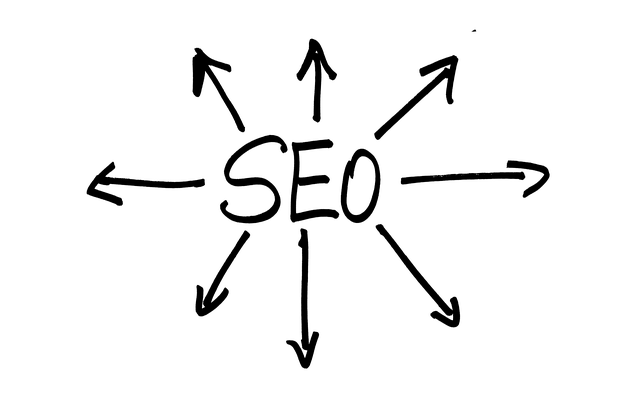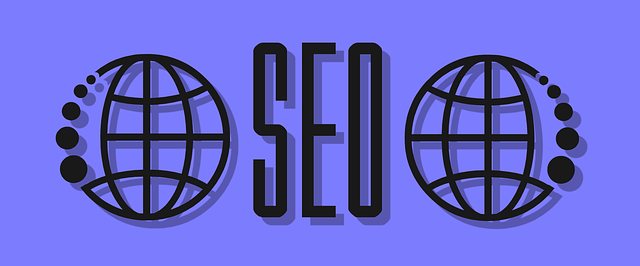White-Hat SEO is an ethical approach to boosting online visibility and search rankings by adhering to search engine guidelines. It involves keyword research using tools like Google Keyword Planner for understanding user intent, content creation tailored to specific keywords, on-page optimization (including meta tags, headers, and mobile responsiveness), and building high-quality backlinks from reputable sources. Regular site audits and updates are crucial for maintaining competitiveness in a dynamic digital landscape. By focusing on these White-Hat SEO Techniques, websites can achieve sustainable growth, attract organic traffic, and maintain compliance with search engine algorithms while enhancing their online authority and user experience.
White-Hat SEO for Websites: Mastering Ethical Search Engine Optimization
In today’s digital landscape, a strong online presence hinges on effective search engine optimization (SEO). Embrace White-Hat SEO techniques for a powerful and ethical approach that boosts your website’s visibility without cutting corners. This comprehensive guide delves into essential practices like strategic keyword research, on-page optimization, high-quality content creation, and mobile accessibility. Learn how to navigate the complex web of URL structures, build authoritative backlinks, and conduct regular updates to stay ahead in search results while upholding ethical standards.
Understanding White-Hat SEO: The Ethical Approach

White-Hat SEO refers to a set of ethical practices designed to improve search engine rankings while adhering to search engines’ guidelines and policies. It’s about understanding the algorithms that drive organic search results and implementing techniques that not only boost visibility but also enhance user experience. Unlike Black-Hat SEO, which employs deceptive tactics to manipulate rankings, White-Hat focuses on legitimate strategies that contribute value to websites and their audiences.
This approach involves a range of techniques, such as keyword research to understand audience intent, creating high-quality content that answers queries, optimizing meta tags for relevance, improving site speed and mobile responsiveness, and building genuine backlinks from authoritative sources. By focusing on these white-hat practices, website owners can build sustainable online presence, attract organic traffic, and foster long-term success without risking penalties or search engine sanctions.
Keyword Research: Finding Relevant Terms Strategically

Keyword research is a cornerstone of effective White-Hat SEO techniques. It involves strategic identification and analysis of relevant terms that potential customers might use when searching for products, services, or information related to your website’s content. Tools like Google Keyword Planner, SEMrush, and Ahrefs can help uncover search volume, competition levels, and user intent behind various keywords. By understanding these factors, you can select the most appropriate keywords to optimize your website’s content for.
Focusing on long-tail keywords—phrases that are more specific and typically have lower competition—can significantly boost your SEO efforts. These keywords not only reflect user search intent more accurately but also help in targeting niche audiences who are more likely to convert into customers. Incorporating these strategic keywords into your website’s metadata, headings, content, and image alt tags enhances its visibility in search engine results pages (SERPs), thereby driving organic traffic and boosting overall online presence through ethical and sustainable White-Hat SEO practices.
On-Page Optimization: Enhancing Content for Search Engines

White-Hat SEO Techniques emphasize on-page optimization as a cornerstone for improving website visibility and ranking in search engine results pages (SERPs). This involves meticulously enhancing content to be more relevant, informative, and optimized for specific keywords that target audiences are searching for. It’s not just about stuffing keywords; it’s about creating quality content that provides genuine value to visitors.
On-page optimization includes optimizing title tags, meta descriptions, header tags, and image alt text. It also involves improving internal linking structures, ensuring URL cleanliness, and making sure the website is mobile-friendly. These practices help search engine crawlers understand a webpage’s context better, thereby increasing its chances of appearing in relevant searches, ultimately driving organic traffic to the site.
High-Quality Content Creation: Engaging and Informative Material

Creating high-quality content is a cornerstone of effective White-Hat SEO techniques. Engaging and informative material not only enhances user experience but also signals to search engines that your website offers valuable insights in its niche. Content should be well-researched, accurately written, and presented in an accessible format, incorporating relevant keywords naturally without appearing spammy. A balance between readability and keyword optimization ensures your audience finds what they’re looking for while search algorithms reward your site’s relevance.
This approach involves understanding your target audience’s needs and preferences, translating them into content that addresses common questions and concerns. Regularly updating content to keep it fresh and relevant also encourages repeat visits from users and boosts your website’s authority in the eyes of search engines. By focusing on quality over quantity, you create a library of valuable resources that not only improves your SEO but also builds lasting trust with your audience.
URL Structure and Navigation: Simplifying the User Journey

A well-structured URL is a cornerstone of effective White-Hat SEO techniques. It significantly enhances user experience by making navigation intuitive and accessible. When URLs are clean, concise, and descriptive, users can easily understand where they are on a website and how to find relevant content. This simplicity encourages exploration, leading to longer session durations and lower bounce rates, which are crucial signals for search engines.
Moreover, simplifying the user journey through URL structure improves crawl efficiency. Search engine bots navigate websites based on these URLs, so clear and organized structures enable faster indexing of pages. This ensures that valuable content is discovered and ranked promptly, contributing to better visibility in search results. A streamlined navigation system is not just about aesthetics; it’s a powerful tool for guiding users and search engines alike towards the core value propositions of your website.
Mobile Optimization: Ensuring Accessibility Across Devices

In today’s digital era, mobile optimization is a critical component of successful White-Hat SEO techniques. With a majority of internet users accessing websites through their smartphones and tablets, ensuring your website is fully accessible across devices is essential for visibility and user experience. Mobile-friendly design includes responsive layouts that adapt seamlessly to different screen sizes, easy navigation using touch gestures, and fast loading times on all platforms. Search engines like Google actively favor mobile-optimized sites in search rankings, recognizing their importance in the modern online landscape.
By implementing these practices, webmasters can create a seamless user experience regardless of the device used, encouraging longer browsing sessions and higher engagement rates. This, in turn, sends positive signals to search algorithms, enhancing the website’s authority and increasing its chances of appearing higher in mobile search results. Ultimately, mobile optimization is not just about adhering to White-Hat SEO best practices; it’s about keeping pace with evolving user behaviors and ensuring your online presence remains competitive.
Building Quality Backlinks: Earning Trust from Authorities

Building quality backlinks is a cornerstone of successful White-Hat SEO Techniques, but it’s about more than just quantity. It’s about earning trust from industry authorities and relevant websites in your niche. High-quality backlinks from reputable sources signal to search engines that your website is an authoritative resource worth referencing. This involves creating valuable content that naturally attracts links, engaging in guest blogging on influential sites, and cultivating relationships with industry leaders.
Instead of pursuing aggressive link-building tactics, White-Hat SEO focuses on building a strong network of backlinks from websites that genuinely find your content useful and trustworthy. By earning these links organically, you not only avoid penalties but also foster long-term sustainability and growth for your website.
Regular Audits and Updates: Staying Ahead in Search Results

Regular audits and updates are integral parts of successful White-Hat SEO techniques, ensuring your website remains competitive in a dynamic search landscape. By conducting thorough site audits, you identify areas that need optimization, from technical issues like broken links and crawl errors to content gaps and low-quality metadata. These audits provide a roadmap for improvements, enabling you to address any penalties or warnings issued by search engines.
Staying on top of these tasks means your website is constantly refined and aligned with the latest industry standards. Regular updates not only fix technical problems but also keep your content fresh and relevant, a factor search engines highly value. This proactive approach enhances user experience, encourages engagement, and ultimately improves your site’s ranking in search results.
